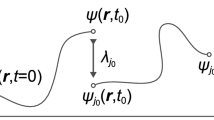Overview
- Editors:
-
-
George Robert Blakley
-
Department of Mathematics, Texas A&M University, College Station, USA
-
David Chaum
-
Center for Mathematics and Computer Science (CWI), Amsterdam, The Netherlands
Access this book
Other ways to access
About this book
Recently, there has been a lot of interest in provably "good" pseudo-random number generators [lo, 4, 14, 31. These cryptographically secure generators are "good" in the sense that they pass all probabilistic polynomial time statistical tests. However, despite these nice properties, the secure generators known so far suffer from the han- cap of being inefiicient; the most efiicient of these take n2 steps (one modular multip- cation, n being the length of the seed) to generate one bit. Pseudc-random number g- erators that are currently used in practice output n bits per multiplication (n2 steps). An important open problem was to output even two bits on each multiplication in a cryptographically secure way. This problem was stated by Blum, Blum & Shub [3] in the context of their z2 mod N generator. They further ask: how many bits can be o- put per multiplication, maintaining cryptographic security? In this paper we state a simple condition, the XOR-Condition and show that any generator satisfying this condition can output logn bits on each multiplication. We show that the XOR-Condition is satisfied by the lop least significant bits of the z2-mod N generator. The security of the z2 mod N generator was based on Quadratic Residu- ity [3]. This generator is an example of a Trapdoor Generator [13], and its trapdoor properties have been used in protocol design. We strengthen the security of this gene- tor by proving it as hard as factoring.
Similar content being viewed by others
Article
Open access
09 August 2021
Table of contents (40 papers)
-
-
Public Key Cryptosystems and Signatures
-
- S C Serpell, C B Brookson, B L Clark
Pages 3-9
-
-
- Neal R. Wagner, Marianne R. Magyarik
Pages 19-36
-
- H. Ong, C. P. Schnorr, A. Shamir
Pages 37-46
-
-
- Benny Chor, Ronald L. Rivest
Pages 54-65
-
-
Cryptosystems and Other Hard Problems
-
- I. F. Blake, R. C. Mullin, S. A. Vanstone
Pages 73-82
-
-
-
- Albert C. Leighton, Stephen M. Matyas
Pages 101-113
-
- J. A. Davis, D. B. Holdridge
Pages 114-114
-
- R. C. Fairfield, A. Matusevich, J. Plany
Pages 115-143
-
- Marc Davio, Yvo Desmedt, Jo Goubert, Frank Hoornaert, Jean-Jacques Quisquater
Pages 144-146
-
- Frank Hoornaert, Jo Goubert, Yvo Desmedt
Pages 147-173
-
-
Randomness and Its Concomitants
-
- Umesh V. Vazirani, Vijay V. Vazirani
Pages 193-202
-
- R. C. Fairfield, R. L. Mortenson, K. B. Coulthart
Pages 203-230
-
Editors and Affiliations
-
Department of Mathematics, Texas A&M University, College Station, USA
George Robert Blakley
-
Center for Mathematics and Computer Science (CWI), Amsterdam, The Netherlands
David Chaum




